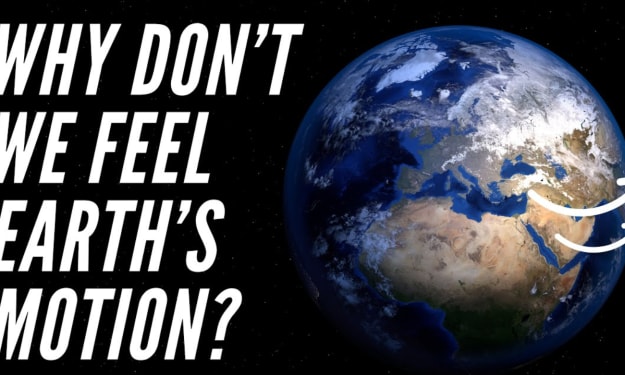
Climate is the long-term weather pattern in a region, typically averaged over 30 years.[1][2] More rigorously, it is the mean and variability of meteorological variables over a time spanning from months to millions of years. Some of the meteorological variables that are commonly measured are temperature, humidity, atmospheric pressure, wind, and precipitation. In a broader sense, climate is the state of the components of the climate system, including the atmosphere, hydrosphere, cryosphere, lithosphere and biosphere and the interactions between them.[1] The climate of a location is affected by its latitude, longitude, terrain, altitude, land use and nearby water bodies and their currents.[3]
Climates can be classified according to the average and typical variables, most commonly temperature and precipitation. The most widely used classification scheme was the Köppen climate classification. The Thornthwaite system,[4] in use since 1948, incorporates evapotranspiration along with temperature and precipitation information and is used in studying biological diversity and how climate change affects it. The major classifications in Thornthwaite’s climate classification are microthermal, mesothermal, and megathermal.[5]
Finally, the Bergeron and Spatial Synoptic Classification systems focus on the origin of air masses that define the climate of a region.
Paleoclimatology is the study of ancient climates. Paleoclimatologists seek to explain climate variations for all parts of the Earth during any given geologic period, beginning with the time of the Earth's formation.[6] Since very few direct observations of climate were available before the 19th century, paleoclimates are inferred from proxy variables. They include non-biotic evidence—such as sediments found in lake beds and ice cores—and biotic evidence—such as tree rings and coral. Climate models are mathematical models of past, present, and future climates. Climate change may occur over long and short timescales from various factors. Recent warming is discussed in terms of global warming, which results in redistributions of biota. For example, as climate scientist Lesley Ann Hughes has written: "a 3 °C [5 °F] change in mean annual temperature corresponds to a shift in isotherms of approximately 300–400 km [190–250 mi] in latitude (in the temperate zone) or 500 m [1,600 ft] in elevation. Therefore, species are expected to move upwards in elevation or towards the poles in latitude in response to shifting climate zones."[7][8]
Definition
Climate (from Ancient Greek κλίμα 'inclination') is commonly defined as the weather averaged over a long period.[9] The standard averaging period is 30 years,[10] but other periods may be used depending on the purpose. Climate also includes statistics other than the average, such as the magnitudes of day-to-day or year-to-year variations. The Intergovernmental Panel on Climate Change (IPCC) 2001 glossary definition is as follows:
Climate in a narrow sense is usually defined as the "average weather", or more rigorously, as the statistical description in terms of the mean and variability of relevant quantities over a period ranging from months to thousands or millions of years. The classical period is 30 years, as defined by the World Meteorological Organization (WMO). These quantities are most often surface variables such as temperature, precipitation, and wind. Climate in a wider sense is the state, including a statistical description, of the climate system.[11]
The World Meteorological Organization (WMO) describes "climate normals" as "reference points used by climatologists to compare current climatological trends to that of the past or what is considered typical. A climate normal is defined as the arithmetic average of a climate element (e.g. temperature) over a 30-year period. A 30-year period is used as it is long enough to filter out any interannual variation or anomalies such as El Niño–Southern Oscillation, but also short enough to be able to show longer climatic trends."[12]
The WMO originated from the International Meteorological Organization which set up a technical commission for climatology in 1929. At its 1934 Wiesbaden meeting, the technical commission designated the thirty-year period from 1901 to 1930 as the reference time frame for climatological standard normals. In 1982, the WMO agreed to update climate normals, and these were subsequently completed on the basis of climate data from 1 January 1961 to 31 December 1990.[13] The 1961–1990 climate normals serve as the baseline reference period. The next set of climate normals to be published by WMO is from 1991 to 2010.[14] Aside from collecting from the most common atmospheric variables (air temperature, pressure, precipitation and wind), other variables such as humidity, visibility, cloud amount, solar radiation, soil temperature, pan evaporation rate, days with thunder and days with hail are also collected to measure change in climate conditions.[15]
The difference between climate and weather is usefully summarized by the popular phrase "Climate is what you expect, weather is what you get."[16] Over historical time spans, there are a number of nearly constant variables that determine climate, including latitude, altitude, proportion of land to water, and proximity to oceans and mountains. All of these variables change only over periods of millions of years due to processes such as plate tectonics. Other climate determinants are more dynamic: the thermohaline circulation of the ocean leads to a 5 °C (41 °F) warming of the northern Atlantic Ocean compared to other ocean basins.[17] Other ocean currents redistribute heat between land and water on a more regional scale. The density and type of vegetation coverage affects solar heat absorption,[18] water retention, and rainfall on a regional level. Alterations in the quantity of atmospheric greenhouse gases (particularly carbon dioxide and methane determines the amount of solar energy retained by the planet, leading to global warming or global cooling. The variables which determine climate are numerous and the interactions complex, but there is general agreement that the broad outlines are understood, at least insofar as the determinants of historical climate change are concerned.[19][20]
Climate classification
Map of world dividing climate zones, largely influenced by latitude. The zones, going from the equator upward (and downward) are Tropical, Dry, Moderate, Continental and Polar. There are subzones within these zones.
Climate classifications are systems that categorize the world's climates. A climate classification may correlate closely with a biome classification, as climate is a major influence on life in a region. One of the most used is the Köppen climate classification scheme first developed in 1899.[21]
There are several ways to classify climates into similar regimes. Originally, climes were defined in Ancient Greece to describe the weather depending upon a location's latitude. Modern climate classification methods can be broadly divided into genetic methods, which focus on the causes of climate, and empiric methods, which focus on the effects of climate. Examples of genetic classification include methods based on the relative frequency of different air mass types or locations within synoptic weather disturbances. Examples of empiric classifications include climate zones defined by plant hardiness,[22] evapotranspiration,[23] or more generally the Köppen climate classification which was originally designed to identify the climates associated with certain biomes. A common shortcoming of these classification schemes is that they produce distinct boundaries between the zones they define, rather than the gradual transition of climate properties more common in nature.
About the Creator
Olaoluwa
Ola was born 24th May 2011
He is a Story teller, Reasearcher, Poem Writer and lot more






Comments
There are no comments for this story
Be the first to respond and start the conversation.